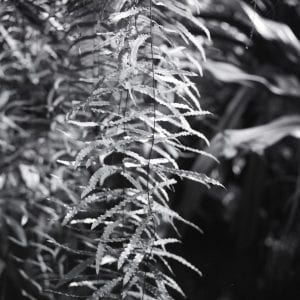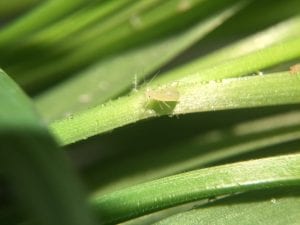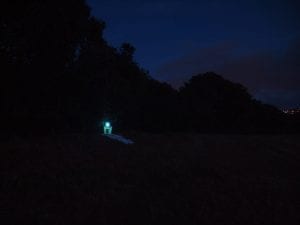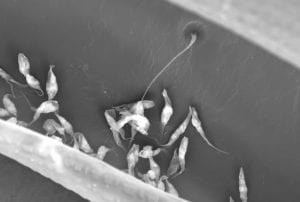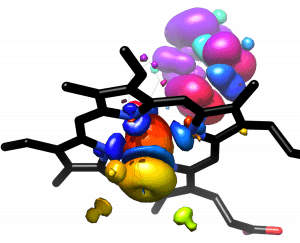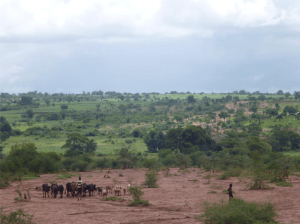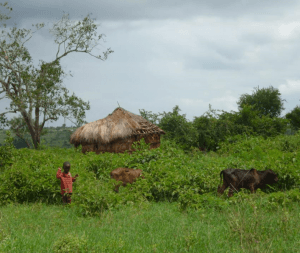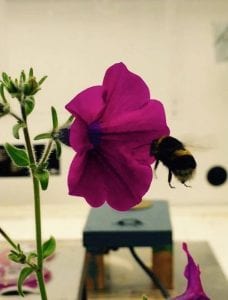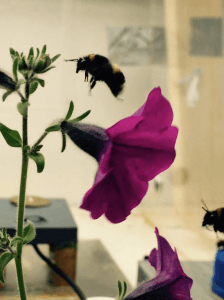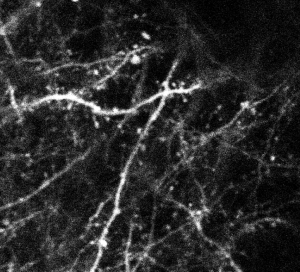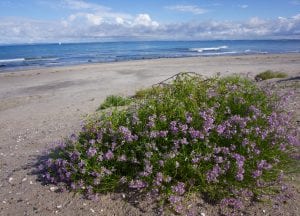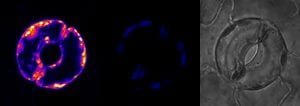Below are some examples of images related to our students' research that were entered as part of our SWBio DTP image competition. Alongside each image there is a brief description.
Endless Forms (of Ferns)
James Clark
Long before the theory of Evolution, the diversity of forms of life has fascinated biologists. Quantifying and measuring this diversity has been a real challenge of my PhD, but also a real joy. This fern, taken on a trip to Poznan palm house, Poland, shows that even groups with relatively few species can display an astonishing variety of shapes and morphologies.
Rose-grain aphid on wheat
Jordan Cuff
The rose-grain aphid Metopolophium dirhodum poses a significant challenge to agriculture. These aphids cause great economic losses, not only through direct destruction of crops, but also the spread of diseases, such as maize mosaic virus and barley yellow dwarf virus. Such insect crop pests are becoming increasingly resistant to conventional pesticides; this has shifted attention to alternative methods of control, such as by natural enemies already abundant in crops. Spiders, being efficient generalist predators, offer a potential avenue for biological control of insect crop pests, but we must first understand how they select their prey.
A female Drosophila suzukii on a grape
Claire Duménil
Adult females Drosophila suzukii lay eggs in ripening soft fruits such as grapes, blueberries, raspberries, plums and more than 50 other fruit types. They use a saw-like ovipositor (visible on the picture) to pierce the skin and lay eggs into the flesh of the fruit. These fruit flies are present worldwide and induce major losses in fruit production . Our study of its physiology and its interaction with fruits may permit to develop novel control methods to protect fruit crops.
Light-trapping of nocturnal moths and flies along hedgerows (Devon, July 2016)
Jeremy Froidevaux
Hedgerows have been identified as a key landscape feature for bats. They use them for both commuting and foraging purposes. Nevertheless, evidence-based information on their management is crucially lacking. During the summer 2016, I assessed the effects of different hedgerow management (trimming regime) on bats and their insect prey (moths and flies). I installed several bat detectors and light traps along 64 hedgerows located in South West England. My results will have strong implications for the designation of adequate agri-environment schemes to favour bats and their prey in farmland-dominated landscapes.
African trypanosomes in their insect vector
Rachel Hutchinson
Trypanosome parasites within the mouthparts of a tsetse fly. African trypanosomes are single celled parasites, spread by the bite of the blood-feeding tsetse, that cause wasting diseases in humans and animals. The long, thin hair-like structure near the center of the image is a mechanoreceptor that allows the fly to monitor blood flow when it takes a blood meal. Heavy parasite infections are believed to interfere with these receptors, causing the fly to feed more frequently and infect more mammalian hosts. Each parasite is approximately 20 micrometers (0.02 mm) in length.
Agropastoralist livestock production
Jamie McFadzean
Typical agropastoralist production practiced by Masaii communities of East Africa, managing grazing livestock over large areas of savanna. This image was taken in the Handeni District of Northeastern Tanzania and depicts some of the families who volunteered to provide their time in interviews and guidance as well as crops and samples of cows milk for analysis. This project formed part of an on-going project working to improve the sustainability of livestock production globally.
Picturing the invisible
Clara Montgomery
This photo shows one of my bumblebees visiting a petunia flower. I study the invisible electrical interactions that occur when a bee visits a flower. The difference in electric potential between bee and flower can be a sufficient force to cause pollen to jump between the two, but may also have various physiological and behavioural effects that we have not yet discovered.
X marks the spot
Nicole Pacchiarini
Direct observation of dendritic spines in living brains: Two-photon microscopy of the barrel cortex in the mouse. I am investigating the structural changes associated with perceptual learning and memory.
Life on the edge
Kate Petty
The European Sea Rocket, Cakile maritima, quite literally lives life on the edge. It is a pioneer species of sand dunes and can be found directly above the high tide line. We are exploring how evolutionary and ecological forces shape a species inhabiting such an exposed and changeable environment. Samples collecting during field work expeditions around the UK and Baltic will enable us to undertake phenotypic and genotypic analysis to better understand the eco-evolutionary dynamics of this fascinating species.
Swollen Guard Cell
Ashley Pridgeon
This is a montage of 3 images, taken by Ashley Pridgeon and Brogan Harris. This shows (left to right) a fluorescent dye, the chloroplasts, and a brightfield image of a single stomatal pore. This was taken when Ashley and Brogan discovered a particularly doughnut shaped stoma during an experiment where they were attempting to measure the levels of a signalling molecule involved in regulating stomatal movement. Stomata are microscopic pores found on the leaves of plants that play key roles in regulating gas exchange and water loss.

